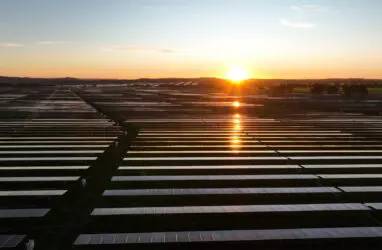Feed aggregator
Brazilian forest restoration finance coalition gains new members
BRIEFING: Path to SAF uptake lined with taxes on fossil jet fuel, flight surcharges, say analysts
VCM Report: Huge volume of REDD carbon credits retired by oil major, VCMI switches direction
LATAM Roundup: Breakthrough in Paraguay as govt moves to create carbon hub
FEATURE: Oil majors tout CCS as only option to decarbonise UK’s hard-to-abate industries
Ukraine approves roadmap for national ETS
Study flags gaps in research on chemical pollution impacts on biodiversity
Scottish nature law proposals trigger biodiversity credit concerns
A frog: their eyes can detect a single photon of light | Helen Sullivan
Their metamorphosis seems more like a human’s than a butterfly’s – so much is visible, and awkward, whereas the butterfly forms in secret
Some species of frog have eyes so sensitive to light that they can detect a single photon. To confirm this, scientists dissected a frog’s eye and removed the lens. If you dissected eyes in biology class, you may remember that a lens is extraordinarily simple, and unlike other organs. It is a hard, clearish, object that comes out clean: no blood supply, no blood. It looks like a glass bead, and functions – inanimate – much like glass, and not like most things we find in our body (except maybe teeth, which function like knives). Look through the lens at the classroom around you, you will see it clearly, but upside down.
A frog in space, moving further and further from the sun, would eventually start to see not a shrinking star, but tiny flashes of light: individual photons. This is because as the photons travel further from their source, they are spread over greater areas: they will hit a frog’s eye less and less often.
Continue reading...BRIEFING: EU’s clean industry push lacks ‘game-changer’ on energy, critics say
Euro Markets: Midday Update
Antioxidants in fruits and flowers seem to counteract harmful effects of microplastics, study shows
Anthocyanins in nuts, fruits and vegetables seem to lesson harmful effects of microplastics on reproductive systems
Antioxidants that give fruits and flowers their vibrant colors seem to counteract some of the most dangerous reproductive system effects of exposure to microplastics, such as decreased fertility, and could ultimately be used in developing treatments, new peer-reviewed research shows.
The paper focused on microplastics’ reproductive toxicity and plant compounds called anthocyanins, which are widely found in nuts, fruits and vegetables. The new review of scientific literature on anthocyanins found that the compounds are probably protective against a range of plastic-induced impacts on hormones, reductions in testosterone and estrogen, decreased sperm counts, lower sperm quality, erectile dysfunction and ovarian damage.
Continue reading...Brazilian commission sets out path forward for national biodiversity plan
Australian agency says Coalition’s nuclear plan would lead to 2 bln tonnes of CO2 emitted
Australia’s main grid sets new solar output record before rooftop PV takes centre stage
The post Australia’s main grid sets new solar output record before rooftop PV takes centre stage appeared first on RenewEconomy.
LEAK: Brussels set to postpone CBAM fees and trim reporting rules
Singapore, Bhutan to sign Article 6 implementation agreement this week
Fossil fuel lobby shares global “toolbox of tactics” to fight Victoria’s gas phaseout
The post Fossil fuel lobby shares global “toolbox of tactics” to fight Victoria’s gas phaseout appeared first on RenewEconomy.
Britain’s net zero economy is booming, CBI says
Green sector growing at triple the rate of the UK economy, providing high-wage jobs and increasing energy security
The net zero sector is growing three times faster than the overall UK economy, analysis has found, providing high-wage jobs across the country while cutting climate-heating emissions and increasing energy security.
The net zero economy grew by 10% in 2024 and generated £83bn in gross value added (GVA), a measure of how much value companies add through the goods and services they produce.
Continue reading...




